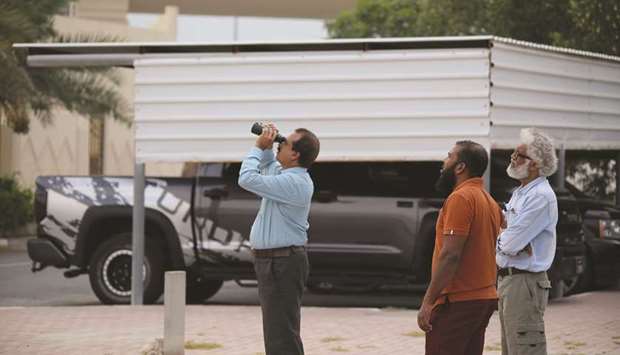A breeding pair of Eurasian Kestrel — a species of the falcon family — has been spotted atop one of the architectural landmarks of Qatar, according to a falcon researcher.
“It is said to be the first sighting of this species in Qatar. The Eurasian Kestrels were found on the rainbow arch (Interchange 5/6) while bird watching,” says Dr Zubair Medammal, a falcon researcher and an assistant professor at University of Calicut in India.
“The falcons were seen frequenting one of the prominent architectural monuments in Qatar, the lower one in the 100m high twin arches nearby Interchange 5/6 on the Lusail Expressway. Nesting on such a man-made, metallic and fully exposed structure below which there is intense traffic round the clock is observed for the first time in the country.The birds normally nest on ledges of cliffs, trees and on the roof of buildings,” explained Dr Medammal.
The falcon researcher said the bird lays 3-7 eggs a year and it takes almost four weeks to hatch.
The hatchlings are fed with chicks of other birds, small rodents and the like, and rarely lizards.
Dr Medammal said on close watch, it was seen that the bird has established its nest in a junction box that holds a red sign lamp on the upper reaches of the lower arch.
“The hole through which the parental birds enter the box seems apparently only of 10-15cm in diameter. Looking at the parental birds frequently bringing food to the nest, it is likely that the box held more than one chick. We have photograph of one of the parent birds bringing in a chick, possibly of a pigeon caught from a nearby building to feed the hatchlings,” he pointed out.
According to him, the parental bird that entered with the prey remained inside for about 15 minutes, feeding the prey to the chicks.
There are plenty of pigeons, easy prey for the Kestrels, available in the neighbourhood.
Kestrels are relatively small among falcons.
Eurasian Kestrel, scientifically called Falco Tinnunculus, has a wide range of distribution in Asia, Africa and Europe.
There are about 10 subspecies of Eurasian kestrels, seen in different regions.
The subspecies seen in the Middle East region is Falco Tinnunculus Tinnunculus.
The falcon researcher pointed out that some of the populations of the same subspecies reportedly migrate to the east, north of Himalayas, and then return west in winter.
Similar to most birds of prey, females of the Eurasian Kestrel appear larger than males, weighing almost 200 gm, much smaller in comparison with the largest falcon, the Gyr that may weigh close to one-and-half-kilo and 65cm tall.
Apart from Dr Medammal, birdwatchers and researchers Rafeeq Kuttippuram, Balu Anchal and Dr PA Azeez observed the birds’ activities on the arch and hoped they would be safe on the landmark arch.

Dr Zubair Medammal and his team watch the Eurasian Kestrel.

